'Work': Bon Jovi Tour Photographer David Bergman Discusses New Coffee Table Book

The first concert I ever attended was a Scorpions show in 1984. I remember this event because, at the time, I was excited about checking out the openers, a young, up-and-coming band called Bon Jovi.
Little did I know I'd also be bearing witness to what would become one of rock’s biggest juggernauts.
Tour photographer David Bergman has spent the last three and a half years working as Bon Jovi’s official tour photographer. With carte blanche access, Bergman has been able to travel the world with the band and document their activities—as well as their shows—with his camera.
Bergman has combined a collection of his photographs into one masterful coffee table book that's appropriately titled Work. The book, an over-sized, 5-pound, 210-page hardcover tome, offers a behind-the-scenes look at one of the world's top touring bands.
In addition to being an in-demand touring and sports photographer, Bergman also runs tourphotographer.com, which lets fans go online and buy high-quality image prints shot at the shows they’ve attended.
I recently spoke with Bergman to find out more about Work and his time spent on tour with Bon Jovi.
GUITAR WORLD: How did this book project come about?
Get The Pick Newsletter
All the latest guitar news, interviews, lessons, reviews, deals and more, direct to your inbox!
Since the beginning of 2011, I’ve photographed every single Bon Jovi live show, which is quite a lot when you think about it. Last year alone, they did 102 shows on six continents. After every show, I would do an edit and narrow it down to the best of the best from each performance.
Over time, I started to develop this massive archive, somewhere in the range of 800,000 images, many of which no one had ever seen. So I brought it to the band. The idea of doing a book was something we had been talking about for quite a while. They've done book projects over the years but nothing quite like this. By the end of this last tour, we decided the time was finally right and started putting it together.
Jon has said your photos are works of art. How would you describe your style of photography?
That’s a tough question. I've always considered myself an action photographer because of my sports/action background. Some of my favorite photos are of Jon when he's in mid-jump, those unplanned action shots that are mixed with the journalistic, “fly on the wall” moments. I take it seriously that I get to be the eyes of the fans and show them what I get to see.
One of the interesting sections of the book deals with Jon’s knee injury and subsequent surgery. Can you tell me a little about that series of photos and why you decided to include them?
I'm really proud of that chapter. Jon actually tore the meniscus in his left leg during a show; at first we weren’t sure how serious it was going to be. All we knew was he couldn't put any weight on his leg, but somehow he was able to power through the pain and finished the show. I remember when he came off stage and they started working on him, everyone had left except for a few of us, and it was really quiet. At that point, I went into instinctive photo journalism mode and just started documenting it.
The band didn't cancel a single show, and while we were in Ireland Jon decided to have surgery instead of waiting for the end of the tour. At the time, I remember asking him if it would be OK to take pictures of the surgery and he was fine with it. We figured no one would ever see the photos. But once we started putting the book together and Jon came up with the title Work, it all seemed to make sense.
The theme of the book is about how hard the band works and how their work ethic is second to none. I told Jon that the knee story really embodies what he's all about. He understood and said, "You know, if this inspires one kid to work through the pain and come out on the other side of an injury stronger than before, it's all worth it."
You began your career in music. What prompted your decision to transition into photo journalism?
While most of my friends were performance majors, I spent my freshman year of college at Berklee majoring in music production. So whenever they would perform, I would go along with them and take pictures. I later transferred to the University of Miami for music and one day walked into the school paper on a whim. The photo editor there handed me a roll of film and told me to go shoot, and if he liked what he saw, maybe he’d give me an assignment. From there, I started working regularly and eventually changed my major to photo journalism. That was the end of my music career and the beginning of my photo career.
How did you get involved with tour photography?
About half way through my stint at the Miami Herald I realized I could start generating my own assignments. So I pitched the idea of going out on tour with Gloria Estefan. It was something I had never done before. The Herald went for it and I spent an entire week on the road with Gloria and her family and just fell in love with tour photography.
Are there any other projects you’re currently working on?
Right now I'm now on a quest to bring respect back to the field of tour photography. It's become so democratized now; where we see a lot of images just come and go online that don't seem to have the impact they should. One of the things I've discovered with tourphotgrapher.com is that when people hold a real quality photo in their hands, there's a visceral reaction you don't get when something just flashes by on the screen. It’s something many of the younger artists who didn't grow up in the physical print world missed out on. The prints, and obviously this book, have so much value. My goal is to bring it to as many artists as I can.
What would you like people who read Work to take from it?
At the end of the day, this book is really about the quality of the band's work and their work ethic. The fact is, Bon Jovi have been around for 30 years. There are a lot of other bands that started out with them that have fallen by the way side, but these guys have continued to put out new music and stay relevant and at the top of their game. That doesn’t happen by chance. I've seen it day in and day out. They're all professional, organized and really know what they're doing.
Jon has often said he's the CEO of a multi-million-dollar corporation. It just so happens that company is a rock band. But he runs it just like any other big company. Every time Bon Jovi tours, they're the top-grossing act of the year, and it was a pleasure for me to be a part of that whole experience.
For more about Bergman, visit davidbergman.net and tourphotographer.com.
James Wood is a writer, musician and self-proclaimed metalhead who maintains his own website, GoJimmyGo.net. His articles and interviews are written on a variety of topics with passion and humor. You can follow him on Twitter @JimEWood.
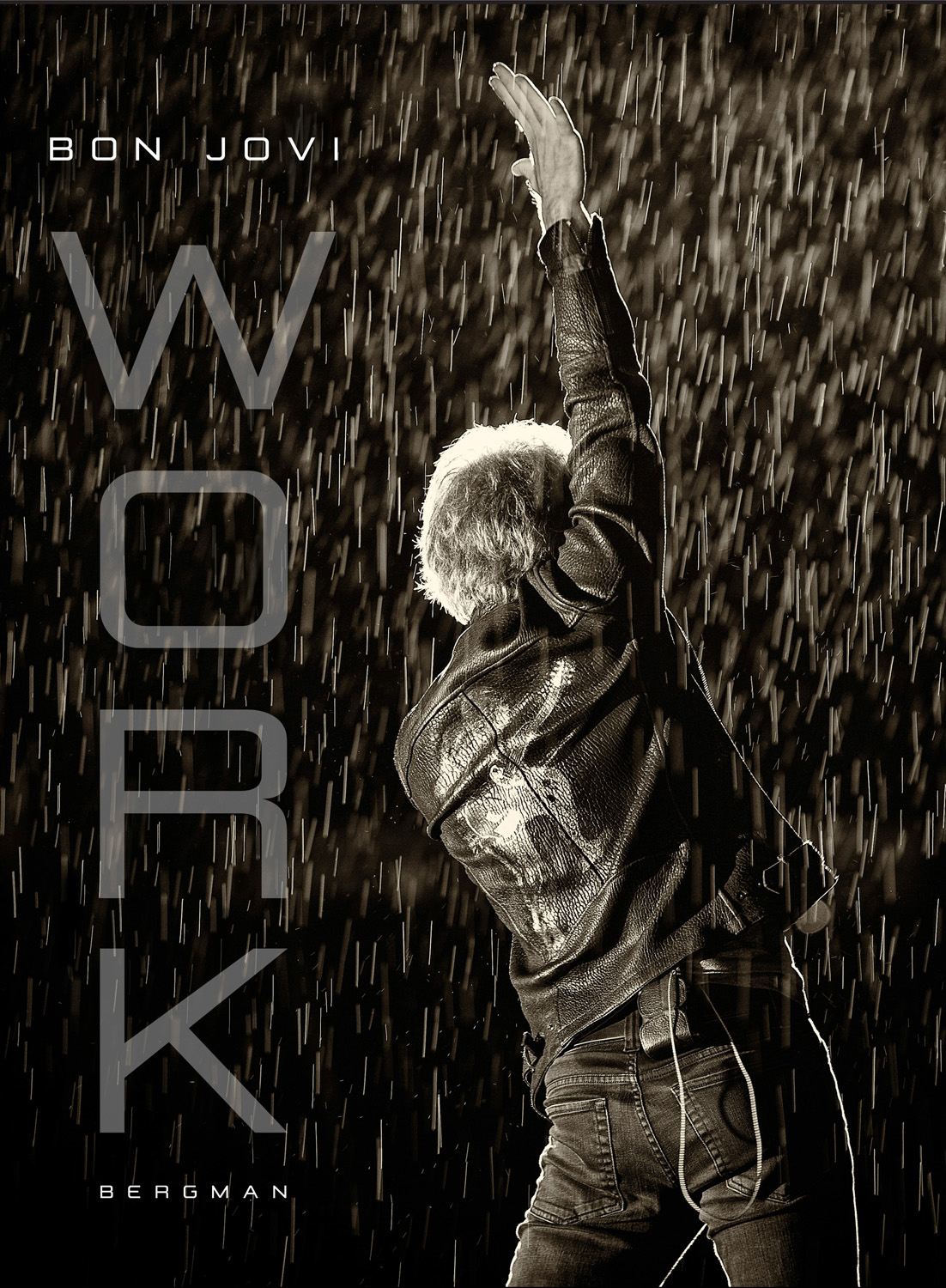
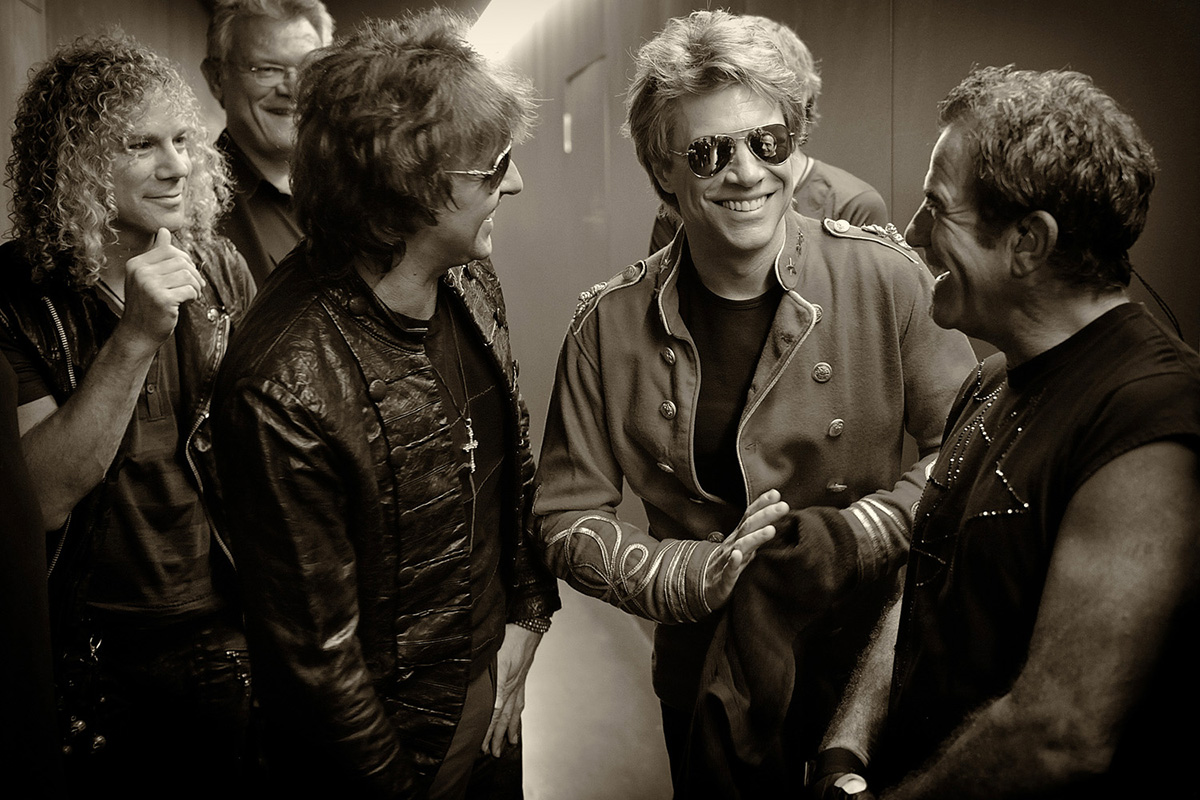
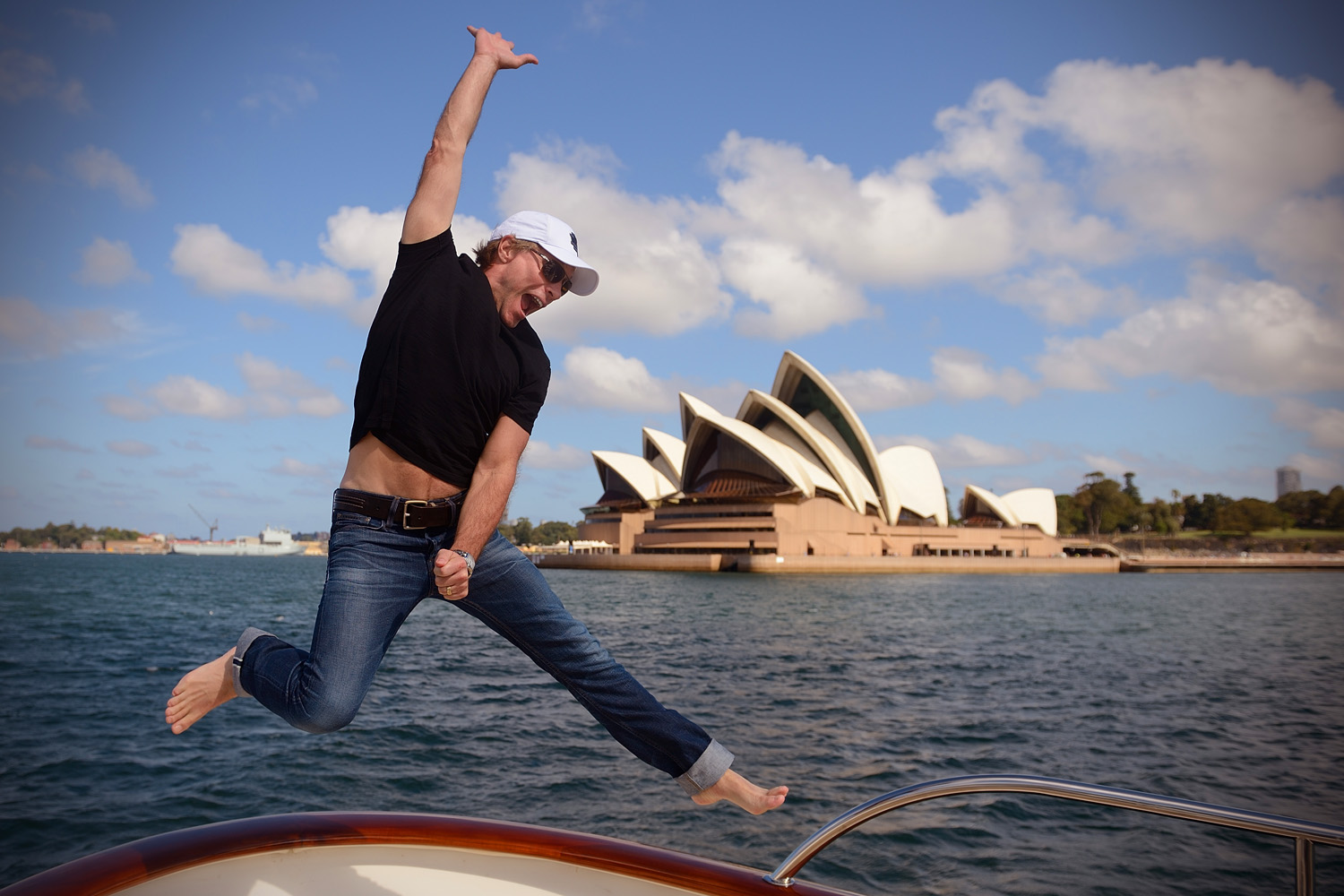
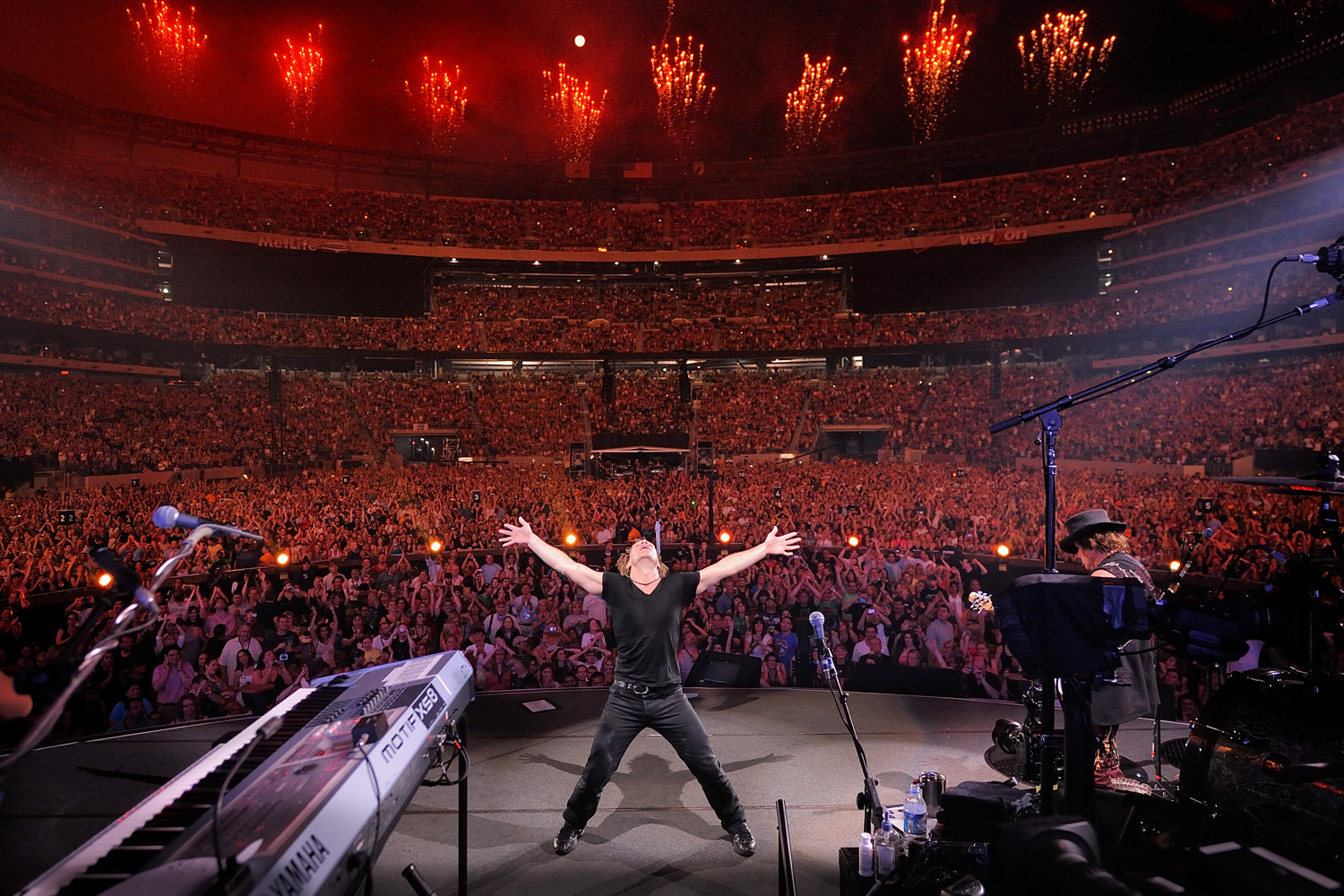
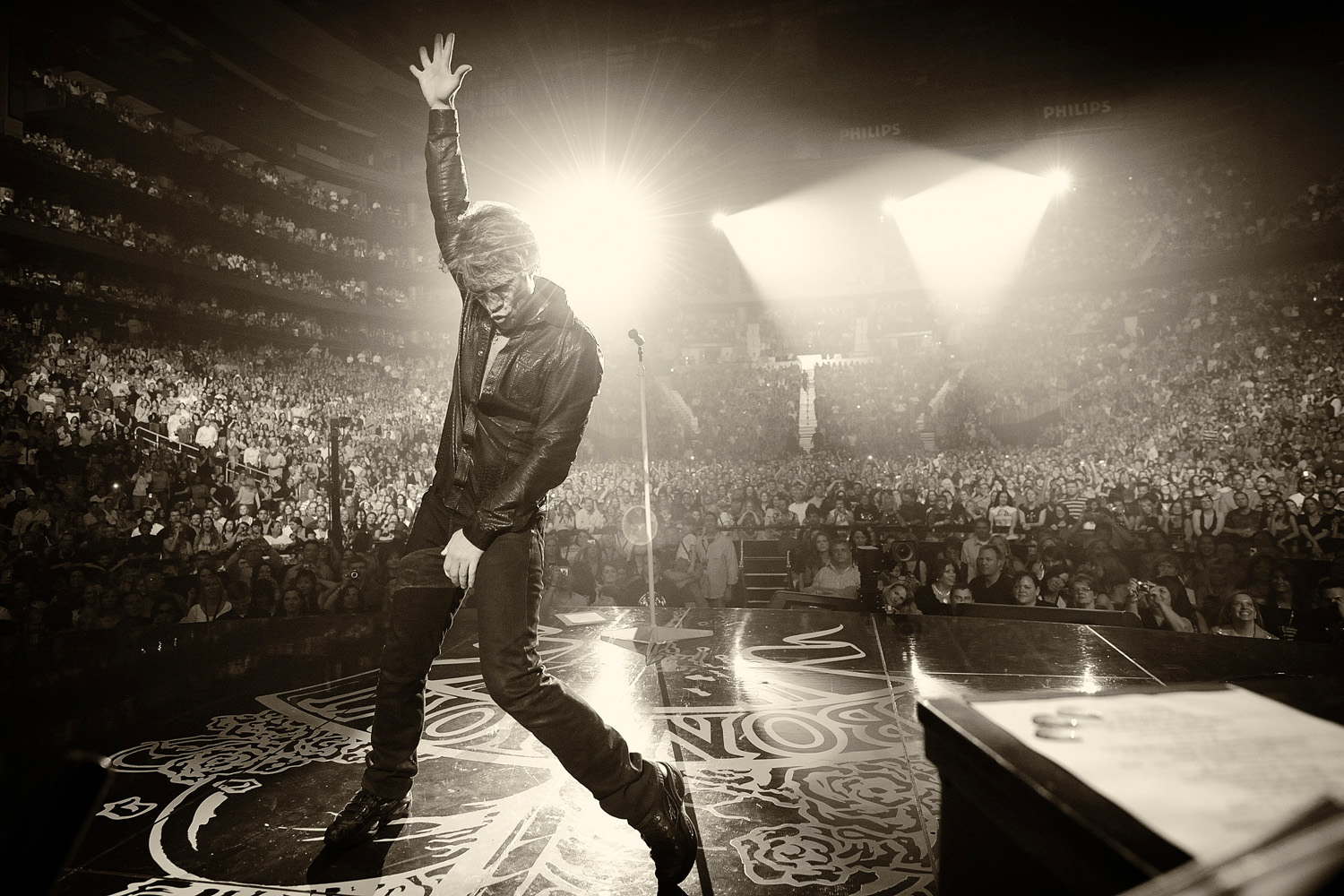
James is a guitarist and freelance writer who's interviewed some of the biggest names in music. He is the author of four books and his writing credits include work for Guitar World, AXS and Yahoo! as well as for his hometown newspaper where he writes on a variety of topics with both passion and humor. As a guitarist, he's performed everywhere from local bars and nightclubs to some of the biggest stages in front of thousands of music fans.
“Every tour was the best I could have done. It was only after that I would listen to more Grateful Dead and realize I hadn’t come close”: John Mayer and Bob Weir reflect on 10 years of Dead & Company – and why the Sphere forced them to reassess everything
“Last time we were here, in ’89, we played with Slash on this stage. I don't remember what we did...” Slash makes surprise appearance at former Hanoi Rocks singer Michael Monroe's show at the Whisky a Go Go


![John Mayer and Bob Weir [left] of Dead & Company photographed against a grey background. Mayer wears a blue overshirt and has his signature Silver Sky on his shoulder. Weir wears grey and a bolo tie.](https://cdn.mos.cms.futurecdn.net/C6niSAybzVCHoYcpJ8ZZgE.jpg)

![A black-and-white action shot of Sergeant Thunderhoof perform live: [from left] Mark Sayer, Dan Flitcroft, Jim Camp and Josh Gallop](https://cdn.mos.cms.futurecdn.net/am3UhJbsxAE239XRRZ8zC8.jpg)






